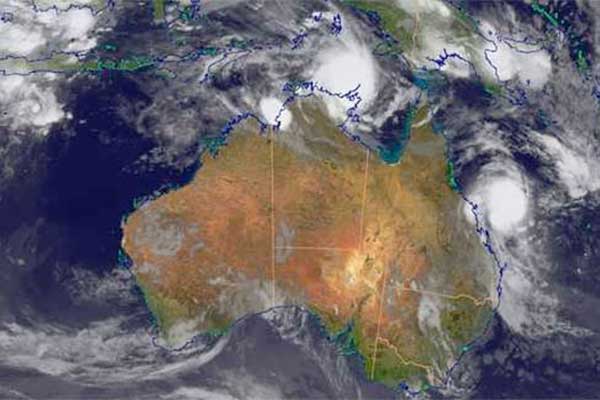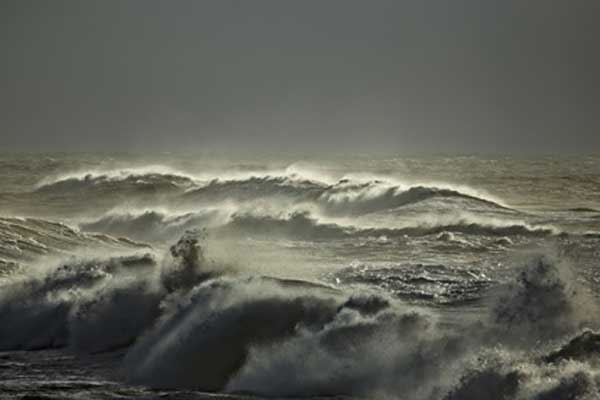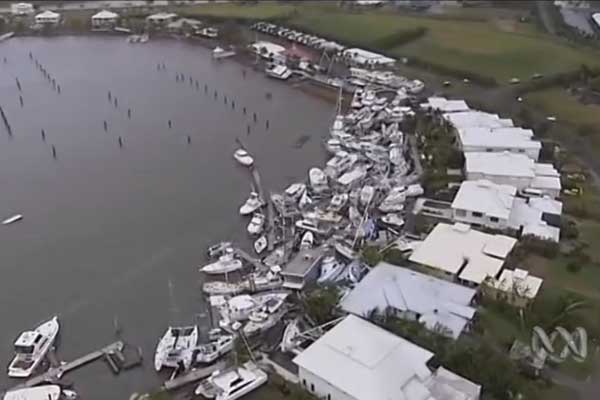Cyclone Marcia is one of the most powerful tropical cyclones to hit Australian land in recent times.
The massive size of the storm has prompted many in the public and the media to ask the Climate Council about the influence of climate change on extreme weather events such as tropical cyclones, and the impacts they have on our coastal communities, infrastructure and industries.
The Climate Council – an independent, crowd-funded organisation founded in the wake of the Abbott Government’s abolition of the Climate Commission – has produced a brief guide to all things Cyclone Marcia.
What is the influence of climate change on the impacts of tropical cyclones?
The most direct influence of climate change on the impacts of tropical cyclones is via coastal flooding. Typically the damage from tropical cyclones comes from the excessively high winds that directly damage built infrastructure and the natural environment, and the extensive flooding of coastal regions that occurs from the storm surge that a tropical cyclone drives and the heavy rainfall that often accompanies the storm.
The rise of sea levels globally because of climate change – warming oceans and melting ice sheets – means that storm surges are now riding on higher levels than they were earlier, increasing the extent and severity of flooding damage from cyclones and other weather systems than can drive storm surges.

Global sea level has already risen by 20 cm and continues to rise, with a projected additional rise of from 40 cm to nearly a metre by 2100 compared to 1990s levels.
The influence of climate change on the nature of tropical cyclones themselves is less well known, in part due to limited and inconsistent datasets of cyclone behaviour over the past several decades.
In general, tropical cyclones are projected to become fewer in number in future, but more of those that do occur will be intense storms.
What is a storm surge?
A storm surge is a rise above the normal sea level resulting from strong onshore winds and/or reduced atmospheric pressure.
Storm surges accompany tropical cyclones as they make landfall but can also be formed by intense low pressure systems in non-tropical areas, such as ‘East Coast Lows’ in the Tasman Sea.
Storm surges can cause extensive flooding of coastal areas. The area of sea water flooding may extend along the coast for hundreds of kilometres, with water pushing several kilometres inland if the land is low-lying.
The worst impacts of a storm surge occur when it coincides with a particularly high tide.

How is climate change influencing sea level?
Climate change drives up sea level by warming the oceans and increasing the flow of ice from the land into the sea, for instance from melting glaciers and polar ice sheets.
The most immediate and serious consequence of rising sea level is the flooding of coastal areas through both inundation and recession.
Climate change exacerbates coastal flooding from a storm surge as the storm rides on higher sea levels.
What are the impacts of cyclones on Australia’s tropical coasts?
Much of the nation’s critical infrastructure – transport, commercial, residential, defence – is located along our coastlines. Yet, virtually all of this infrastructure has been designed and built for a stable climate with known ranges of variability.
But the climate system is no longer stable. Sea levels are rising and so are the risks they pose for our coastal infrastructure.

Coastal flooding creates many risks, including impacts on health and well‑being, damage to coastal ecosystems and disruption of people’s lives.
A sea-level rise of only 0.5 m would, on average, mean that a 1-in-100 year flood – a very rare event today – would occur every few months.
The risks to coastal infrastructure are potentially huge, particularly the economic losses due to damage and destruction and the flow-on effects to the economy more generally.
What are the costs of coastal flooding?
The costs of extreme climate events, in which coastal flooding was an important component have been significant in recent times.
Tropical Cyclone Yasi in 2011 – combined with a series of early severe floods that occurred throughout December 2010 and January 2011 – reduced the Queensland Gross State Product by $6 billion in 2010–11.
Cyclone Larry in 2006 was accompanied by a powerful storm surge, affecting 10,000 homes and the cost of the damage to both infrastructure and crops around Innisfail was estimated to be over $500 million.
A year earlier, Cyclone Ingrid caused approximately $2 million worth of damages in Queensland and $10 million in the Northern Territory. And Cyclone Vance in 1999 caused $35 million worth of damage ($108 million in 2011 terms).

Coastal flooding is a sleeping giant. If the threat of sea level rise is ignored, the projected increases in economic damage caused by coastal flooding are massive.
By 2050 – without adaptation – the losses from coastal flooding globally are projected to rise to $US1 trillion per year, about the size of the entire Australian economy.
By 2100 the losses from coastal flooding are projected to be 0.3–9.3 per cent of global GDP per year.
The high-end projection is a scenario for global economic collapse.
What can we do?
We need deep and urgent cuts in greenhouse gas emissions this decade and beyond if we are to avoid the most serious risks from rising sea levels and coastal flooding.
To prepare for the sea-level rise that we can’t prevent, and the impacts associated with storm surges on the back of tropical cyclones, it is essential to lower the risks of coastal flooding.
This requires a coordinated national planning framework integrated across federal, state and local governments with clear allocation of responsibilities.
* Professor Will Steffen is a Climate Councillor with The Climate Council. You can find out more about their excellent work here.
Donate To New Matilda
New Matilda is a small, independent media outlet. We survive through reader contributions, and never losing a lawsuit. If you got something from this article, giving something back helps us to continue speaking truth to power. Every little bit counts.



